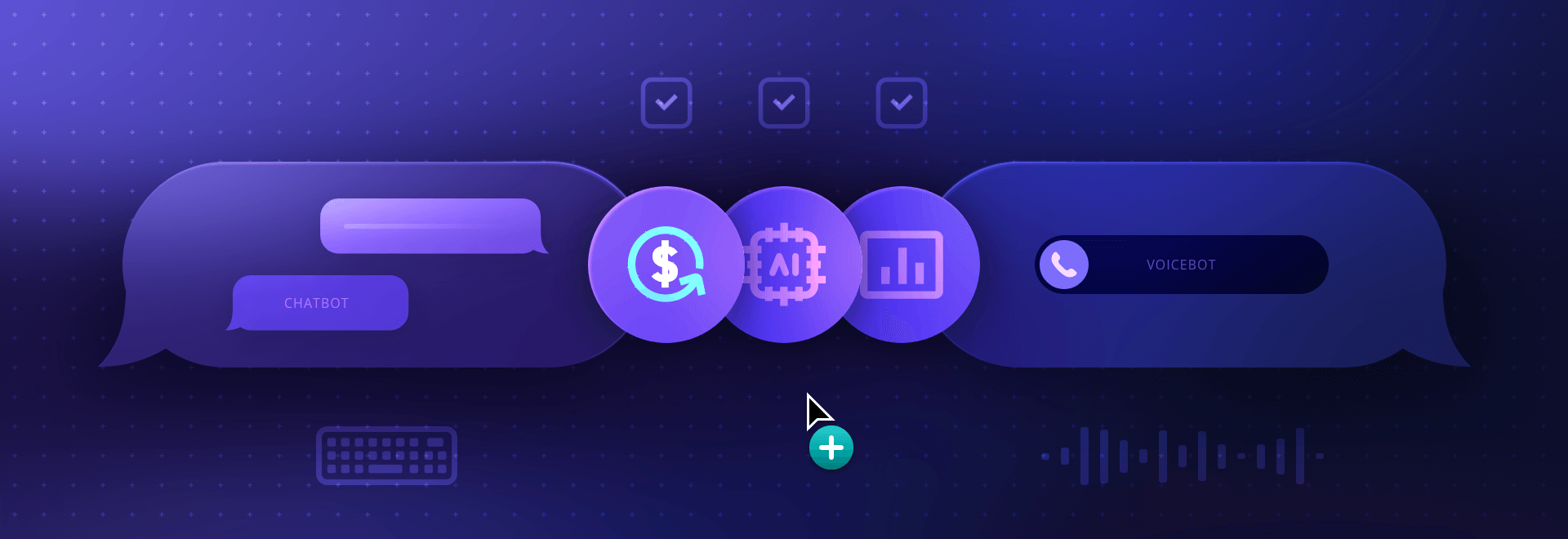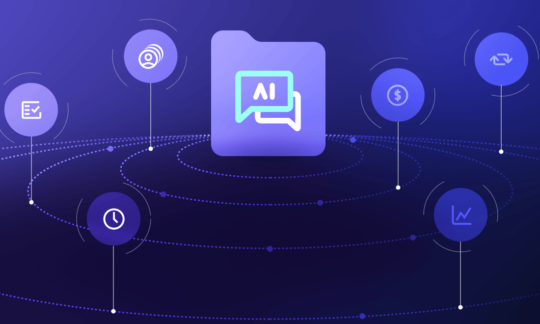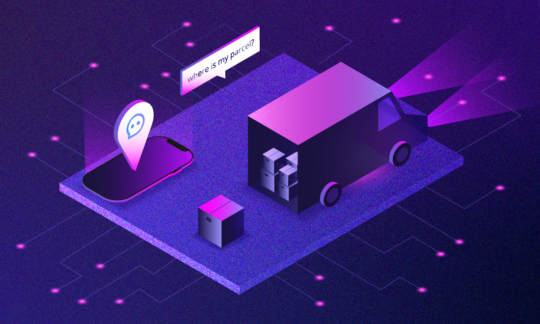Maximising Business ROI with AI Chatbots & Voice Bots
Table of contents
- How to Position the Business Benefits of Chatbots
- How Chatbots Can Help Generate Revenue
- How Chatbots Can Help Reduce Costs
- Reducing Investment and Implementation Costs
- Maximise ROI with SentiOne Automate Bots
- Article Summary
Welcome to another article from the AI Bots – A Manager’s Handbook Series, where we address all the headaches of chatbot/voice bot project managers.
If you’re a professional tasked with creating a business case for a chatbot for your organisation, take heart in some good news: the ROI of chatbots gets better every day. Several trends are working in your favour to facilitate an easy project approval, including:
- Vast improvements in the conversational quality of the current generation of AI chatbots
- Growing acceptance and adoption by users
- Turnkey chatbot solutions suited to non-technical users.
Once exclusively owned by Customer Care teams, chatbots can deliver far more than cost savings from customer support. To get the highest chatbot ROI, consider the potential impacts on marketing and sales that your chatbot can deliver. Adding the revenue potential of chatbots alongside the impressive cost savings can provide you with a bulletproof business case.
How to Position the Business Benefits of Chatbots
Your chatbot business model may be jeopardised by stakeholders with dated perceptions of chatbots. The early generations of chatbots were often simple, rule-based bots that left many users unsatisfied. But chatbots have evolved from the Model T Ford to the Tesla in a remarkably short span of time. You’ll want to create a distinction between those early experiences and what chatbots can deliver today. The data is on your side: a 2022 study by Juniper Research found that the total number of chatbot messaging apps accessed globally will increase from 3.5 billion in 2022 to 9.5 billion by 2026.
You don’t have to look very hard to see examples of chatbots delivering business benefits.
Across banking, healthcare, and insurance, bots are increasingly becoming the first point of customer contact. Juniper predicts that chatbots can successfully handle 75% of interactions in the healthcare sector and over 90% in banking. You want to highlight some of your top competitors who are making strides with an AI chatbot. Nothing stirs action from executives more than that dreadful feeling of falling behind, and it’s likely that nearly every business leader is fielding questions from their Board, such as “How are you leveraging artificial intelligence for a business advantage?”
As with any business case, you should paint a vivid picture of the cost of doing nothing. This puts naysayers and detractors in the position of having to defend the price of a lost opportunity. You’ll have plenty of ammunition here, including:
- Customer experience: call wait times, human error rates, complaints, and negative reviews
- Employee engagement: employee morale, churn rates.
Or, if your company has a legacy chatbot solution and you’re advocating for a more modern solution, gather up the current stats for your chatbot such as call resolution and intent accuracy, then compare those against the industry benchmarks that top chatbot providers are achieving today.
How Chatbots Can Help Generate Revenue
Most professionals don’t think of their company chatbot as a driver of sales, but given the volume of customer touchpoints a chatbot can deliver, it’s a huge opportunity. A recent Hubspot survey found that 47% of respondents are willing to buy products from a bot. That’s a compelling statistic for any e-commerce retailer, but there are many ways chatbots and voicebots can support companies with more complex sales cycles.
Customer profiling: Chatbots can engage customers (smartly, appropriately, not intrusively or greedily) to gather valuable data on product preferences, multi-channel contact information, and demographic and psychographic data. By feeding the data into the CRM, internal teams that mine the data can surface new prospects for targeted marketing and sales efforts.
Lead generation and qualification: Chatbots can be deployed across multiple channels, including social media, providing them with reach far greater than inbound traffic to your website. We’ve detailed some of the benefits of Facebook Messenger chatbots and Skype chatbots for businesses. They can be very effective at engaging prospects on product inquiries or plan options. As chatbots fulfil early-stage inquiries from prospects, they can collect opt-in permissions and build a CRM profile with lead qualification scoring. It’s like having a 24/7 sales rep that is fluent in several languages.
Upselling: Chatbots and voice bots can drive new sales from your existing customer base in several ways. Erica, the virtual financial assistant from Bank of America, offers a full range of banking services. While servicing customers, it can also provide supplementary offers, promotions, or product add-ons (e.g. credit protection). Chatbots can either fulfil a sale directly or hand off highly qualified leads to human agents that close the sale. When done well, upselling and cross-selling can be a driver of customer loyalty. An Accenture study found that 91% of consumers are more likely to purchase from brands that recognise, remember, and provide relevant offers and recommendations.
Remarketing: Chatbots can also help reactivate leads that are cold or inactive. Research by Fundera found that the average cart abandonment rate was almost 70%. In banking, inactive accounts represent a reactivation opportunity (there are almost 370 million dormant bank accounts in India alone). With a chatbot, you can define triggers for reminders and outreach to generate new activity.
Outbound marketing: Chatbots can proactively reach out to clients with new promotional offers. They can do this in the channels preferred by your customer, including social media, SMS, or voice assistants.
Referral generation: Excellent customer service delivered by a chatbot can lead to a virtuous loop for your business. Happy clients are more willing to recommend your brand to others, and share positive ratings and reviews online. This positive feedback can attract the interest of potential clients.
Onboarding: Money management company Plum uses an AI chatbot to guide clients through the onboarding process. Customers have the option to sign-up, or learn more about the value of the company’s services.
The revenue generation opportunities of chatbots cumulatively provide businesses with the ability to move clients through the sales funnel faster. Since bots are always on, they continue working when human reps sleep, ensuring that the new business engine is constantly running. When evaluating the costs and benefits of an AI virtual assistant, ROI calculations should include the incremental sales lift it can generate.
How Chatbots Can Help Reduce Costs
So how much money do chatbots save? In the banking sector alone, Juniper Research predicted that companies will save $7.3 billion in operational costs from using chatbots in 2023. Chatbot cost savings arise from a range of factors, including:
- Reducing call times: No matter how efficient your customer support reps are, they simply cannot scale to match a chatbot, which can handle thousands of interactions concurrently.
- Reduced staffing needs: As your chatbot becomes more proficient at recognising intent and resolving customer issues, fewer handoffs to human agents are required. This enables customer service reps to focus on expert-level, high-value issues rather than routine inquiries. This has the added benefit of increasing employee satisfaction and reducing turnover.
- Fewer errors: Let’s face it: humans make mistakes, sometimes costly ones. Bots deliver with unerring consistency, and can be continually trained to optimise performance.
- Multi-channel: Your chatbot can concurrently provide support in webchat, social media, voice assistants, and internal collaboration tools. In contrast, many organisations have support teams divided based on channel, meaning customers get transferred from one department to the next, often having to re-establish their identity and re-explain their issues. Chatbots can maintain the continuity of the conversation even when switching between channels.
- Always on: Chatbots and voicebots can provide 24/7 support for your customers
- Multilingual support: Chatbots can be trained to provide service in over 100 languages, reducing the potentially costly need for multi-lingual support reps.
- Providing internal support: Chatbots can also act as powerful tools for support reps to use while addressing clients. They can quickly retrieve information, or generate answers to support the customer’s needs.
Reducing Investment and Implementation Costs
We’ve discussed the revenue generation and cost-saving opportunities of chatbots, but no business case is complete without a cost-benefit analysis of chatbot expenses, including the implementation budget as well as annual operational costs. A complete list should include:
- Licensing: Include any monthly or annual fees. Chatbot platforms will typically offer a SaaS or a subscription model. SentiOne Automate offers both options.
- Deployment: If security is top of mind, your company may prefer an on-premises installation. This requires server space as well as effort from your network operations team. SentiOne Automate is designed for easy on-premise installation requiring minimal storage and resources.
- Onboarding: Your bot designers will spend some time learning the platform and understanding its capabilities. You’ll need time from team members who can map the required connections from the platform to your internal systems.
- Training and testing: Once your chatbot is built you’ll need a dedicated phase of effort to train and test your bot.
- Optimisation: Your annual run-rate costs should include time for team members to monitor and improve the quality of chatbot responses.
- Channel costs: If you choose to deploy your chatbot on social media platforms like Whatsapp, there are per-message fees you should estimate in your plan. Despite the fees, there are many compelling reasons to launch a WhatsApp chatbot. If your plan is to launch webchat on your website, there are no per-message costs with platforms like SentiOne Automate.
You can exercise some control over your costs in the following areas:
- Support and training: As you evaluate chatbot platform vendors, it’s important to assess the quality of the support documentation and staffing they provide. When you have a thorough knowledge base and a direct support team, you can substantially reduce the learning curve.
- Ease of use: A low-code/no-code platform can help reduce the need for scarce and expensive technical expertise. SentiOne Automate has a visual bot-builder interface that allows non-technical users to design and build a chatbot.
- Training: Before you begin building your bot, you can save a great deal of effort by carefully collecting the customer support knowledge from across your organisation. Having a well-designed FAQ that reflects the top needs of your customer base ensures your chatbot can have a high success rate for customer resolutions. It’s also important to seek a platform provider with an extensively pre-trained NLU engine. SentiOne Automate comes pre-trained with more than 30 billion online conversations.
Maximise ROI with SentiOne Automate Bots
SentiOne Automate is a powerful chatbot platform that can help your business achieve a high chatbot ROI by delivering lead generation capabilities as well as the cost savings of AI-enabled automation. To learn more about how we work and the tool, book a demo. To model the potential ROI benefits of a chatbot for your business, try our chatbot ROI calculator.
Article Summary
This article highlights the increasing ROI potential of AI chatbots and voicebots for businesses. It emphasises the vast improvements in conversational quality, growing user acceptance, and availability of turnkey solutions for non-technical users. The article suggests positioning chatbots as revenue generators, not just cost-saving tools, by showcasing successful use cases in banking, healthcare, and insurance. It also outlines various ways chatbots can help generate revenue, including customer profiling, lead generation, upselling, remarketing, and outbound marketing. Additionally, it discusses how chatbots can reduce costs by handling large volumes of interactions, reducing staffing needs, minimising errors, and providing 24/7 multilingual support.



